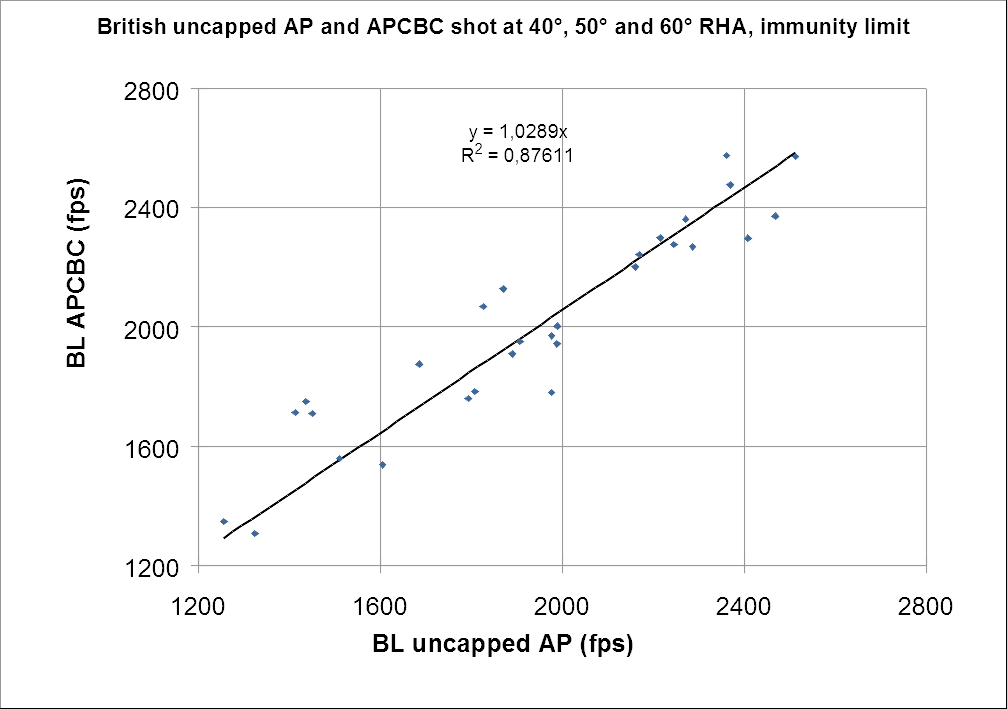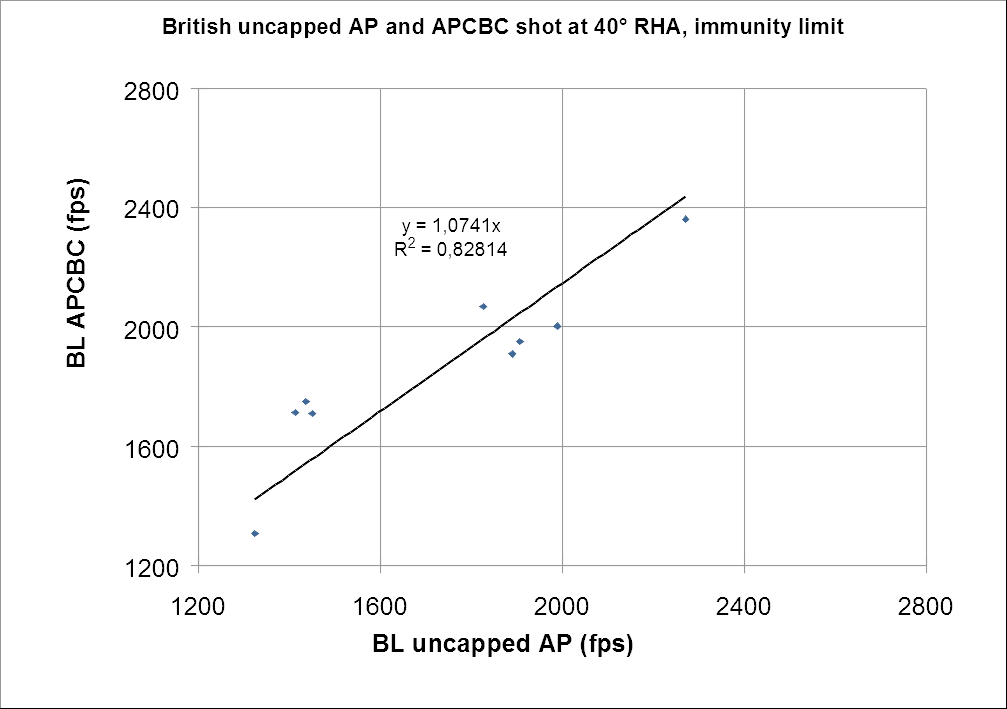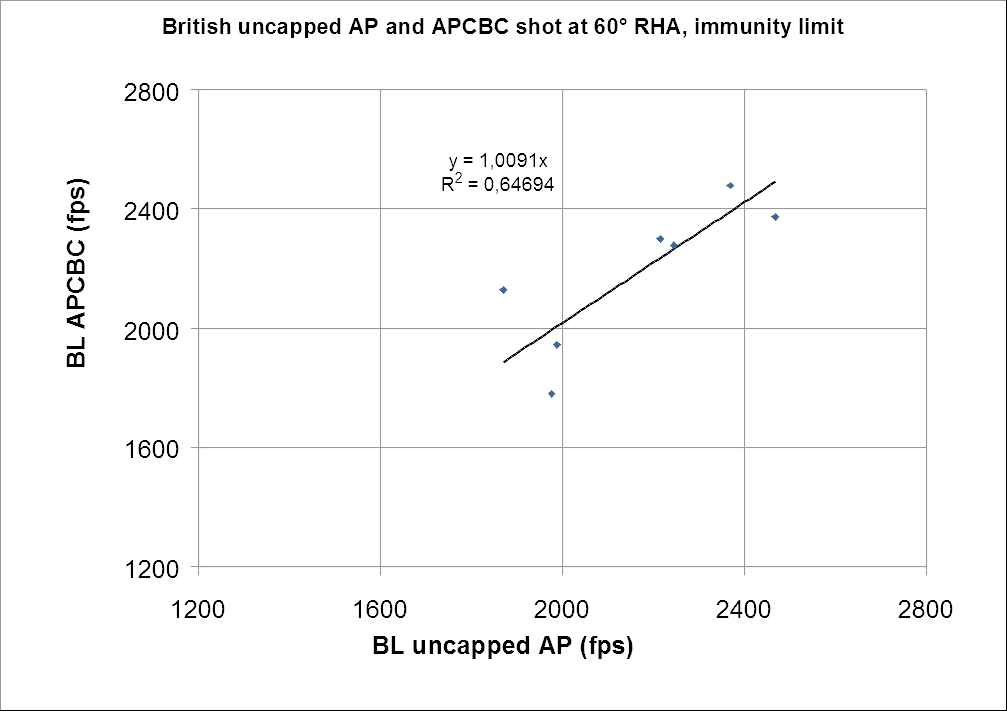Each data point represents the respective BL against the same plate determined using AP and APCBC 2pdr and 6pdr shells.
Although there is considerable dispersion in the data, we can see that, on average, the capped AP shot of the same mass (sans the cap) has a higher ballistic limit(about +3%) for the same target.
40° 50° and 60° data

40° only

50° only

60° only

You can use this knowledge next time you see “experts” trying to explain to you how the AP cap was supposed to “bite” into the armour and improve high obliquity performance.
Source: “Report M.7000 A/11 No.1
Department of tank design armour branch. APCBC Shot at oblique impact of machinable quality plate.”
Link: Whelmy - 2,6 and 17 pdr AP and APCBC vs slope - Album on Imgur
Edit: Here is the comparison of a capped and uncapped shell of the same mass at low obliquity:
